Skin Capacitive Image Stitching and Occlusion Measurements
Abstract
1. Introduction
2. Materials and Methods
2.1. Apparatus
2.2. Skin Capacitive Image Stitching
2.3. Skin Capacitive Image Occlusion Measurements
3. Results
3.1. Skin Capacitive Image Stitching
3.2. Skin Capacitive Image Occlusion Measurements
4. Discussion
5. Conclusions
Author Contributions
Funding
Institutional Review Board Statement
Informed Consent Statement
Data Availability Statement
Acknowledgments
Conflicts of Interest
References
- Léveque, J.L.; Querleux, B. SkinChip, a new tool for investigating the skin surface in vivo. Ski. Res. Technol. 2003, 9, 343–347. [Google Scholar] [CrossRef] [PubMed]
- Batisse, D.; Giron, F.; Léveque, J.L. Capacitance imaging of the skin surface. Ski. Res. Technol. 2006, 12, 99–104. [Google Scholar] [CrossRef] [PubMed]
- Bevilacqua, A.; Gherardi, A. Characterization of a capacitive imaging system for skin surface analysis. In Proceedings of the 2008 First Workshops on Image Processing Theory, Tools and Applications, Sousse, Tunisia, 24–26 November 2008; pp. 1–7. [Google Scholar]
- Gherardi, A.; Bevilacqua, A. A capacitive image analysis system to characterize the skin surface. Int. J. Mod. Phys. C 2009, 20, 2027–2041. [Google Scholar] [CrossRef]
- Nam, J.-M.; Jung, S.-M.; Lee, M.-K. Design and implementation of a capacitive fingerprint sensor circuit in CMOS technology. Sens. Actuators A: Phys. 2007, 135, 283–291. [Google Scholar] [CrossRef]
- Singh, H.; Xiao, P.; Berg, E.P.; Imhof, R.E. In-Vivo Skin Imaging For Hydration and Micro Relief Measurements. In Proceedings of the Stratum Corneum V Conference, Cardiff, UK, 11–13 July 2007. [Google Scholar]
- Singh, H.; Xiao, P.; Berg, E.P.; Imhof, R.E. Skin Capacitance Imaging for Surface Profiles and Dynamic Water Concentration Measurements. In Proceedings of the ISBS Conference, Seoul, Korea, 7–10 May 2008. [Google Scholar]
- Martinelli, E.; Stabile, M.; Catini, A.; Paolesse, R.; D’Amico, A.; Di Natale, C. An array of capacitive sensors based on a commercial fingerprint detectors. Sens. Actuators B: Chem. 2008, 130, 264–268. [Google Scholar] [CrossRef]
- Bevilacqua, A.; Gherardi, A. Age-Related Skin Analysis by Capacitance Images. In Proceedings of the 17th International Conference on Pattern Recognition, 2004. ICPR 2004, Cambridge, UK, 26 August 2004; Volume 2, pp. 703–706. [Google Scholar] [CrossRef]
- Ou, X.; Pan, W.; Xiao, P. In vivo skin capacitive imaging analysis by using grey level co-occurrence matrix (GLCM). Int. J. Pharm. 2014, 460, 28–32. [Google Scholar] [CrossRef] [PubMed]
- Ou, X.; Pan, W.; Zhang, X.; Xiao, P. Skin Image Retrieval Using Gabor Wavelet Texture Feature. Int. J. Cosmet. Sci. 2016, 38, 607–614. [Google Scholar] [CrossRef] [PubMed]
- Pan, W. Skin Image Processing and Skin Characterizations. Doctoral Dissertation, London South Bank University, London, UK, 2007. [Google Scholar]
- Zhang, X.; Bontozoglou, C.; Chirikhina, E.; Lane, M.E.; Xiao, P. Capacitive Imaging for Skin Characterizations and Solvent Penetration Measurements. Cosmet. 2018, 5, 52. [Google Scholar] [CrossRef]
- Bontozoglou, C.; Xiao, P. Applications of Capacitive Imaging in Human Skin Texture and Hair Analysis. Appl. Sci. 2019, 10, 256. [Google Scholar] [CrossRef]
- Xiao, P.; Chen, D. The Effect of Sun Tan Lotion on Skin by Using Skin TEWL and Skin Water Content Measurements. Sensors 2022, 22, 3595. [Google Scholar] [CrossRef] [PubMed]
- Zhang, X.; Pan, W.; Bontozoglou, C.; Chirikhina, E.; Chen, D.; Xiao, P. Skin Capacitive Imaging Analysis Using Deep Learning GoogLeNet. In Proceedings of the Computing Conference, London, UK, 16–17 July 2019. [Google Scholar]
- Hossain, M.S.; Islam, M.T.; Akhtar, Z. Incorporating deep learning into capacitive images for smartphone user authentication. J. Inf. Secur. Appl. 2022, 69, 103290. [Google Scholar] [CrossRef]
- Navaraj, W.; Dahiya, R. Fingerprint-Enhanced Capacitive-Piezoelectric Flexible Sensing Skin to Discriminate Static and Dynamic Tactile Stimuli. Adv. Intell. Syst. 2019, 1, 1900051. [Google Scholar] [CrossRef]
- Rowe, R.K.; Nixon, K.A.; Butler, P.W. Multispectral Fingerprint Image Acquisition. In Advances in Biometrics; Springer: London, UK, 2009; pp. 3–23. [Google Scholar]
- Sharma, A.; Arya, S.; Chaturvedi, P. A Novel Image Compression Based Method for Multispectral Fingerprint Biometric System. Procedia Comput. Sci. 2020, 171, 1698–1707. [Google Scholar] [CrossRef]
- Morgeneier, D. Latest innovations in fingerprint capture. Biom. Technol. Today 2021, 2021, 9–12. [Google Scholar] [CrossRef]
- Jeon, G.J.; Lee, S.H.; Lee, S.H.; Shim, J.B.; Ra, J.H.; Park, K.W.; Yeom, H.I.; Nam, Y.; Kwon, O.K.; Park, S.K. Highly Sensitive Active-Matrix Driven Self-Capacitive Fingerprint Sensor based on Oxide Thin Film Transistor. Sci Rep. 2019, 9, 3216. [Google Scholar] [CrossRef] [PubMed]
- Berg, E.P.; Pascut, F.C.; Ciortea, L.I.; O’Driscoll, D.; Xiao, P.; Imhof, R.E. AquaFlux—A New Instrument for Water Vapour Flux Density Measurement. In Proceedings of the 4th International Symposium on Humidity and Moisture, Center for Measurement Standards, ITRI, Taipei, China, 16–19 September 2002; pp. 288–295, ISSN 957-774-423-0. [Google Scholar]
- Imhof, R.E.; Berg, E.P.; Chilcott, R.P.; Ciortea, L.I.; Pascut, F.C.; Xiao, P. New Instrument for the Measurement of Water Vapour Flux Density from Arbitrary Surfaces. IFSCC Mag. 2002, 5, 297–301. [Google Scholar]
- Chirikhina, E.; Chirikhin, A.; Xiao, P.; Dewsbury-Ennis, S.; Bianconi, F. In Vivo Assessment of Water Content, Trans-Epidermial Water Loss and Thickness in Human Facial Skin. Appl. Sci. 2020, 10, 6139. [Google Scholar] [CrossRef]
- Template Matching. Available online: https://docs.opencv.org/3.4/d4/dc6/tutorial_py_template_matching.html (accessed on 16 March 2022).
- Brunelli, R. Template Matching Techniques in Computer Vision: Theory and Practice; John Wiley & Sons: Hoboken, NJ, USA, 2009; ISBN 978-0-470-51706-2. [Google Scholar]
- Wang, Z.; Bovik, A.C.; Sheikh, H.R.; Simoncelli, E.P. Image quality assessment: From error visibility to structural similarity. IEEE Trans Image Process 2004, 13, 600–612. [Google Scholar] [CrossRef] [PubMed]
- Coefficient of determination. Available online: https://en.wikipedia.org/wiki/Coefficient_of_determination (accessed on 2 January 2023).
- Panoramic Photography. Available online: https://en.wikipedia.org/wiki/Panoramic_photography (accessed on 2 January 2023).
- Parallax. Available online: https://en.wikipedia.org/wiki/Parallax (accessed on 2 January 2023).
- Understanding Features. Available online: https://docs.opencv.org/5.x/df/d54/tutorial_py_features_meaning.html (accessed on 2 January 2023).
- Lowe, D.G. Distinctive Image Features from Scale-Invariant Keypoints. Int. J. Comput. Vis. 2004, 60, 91–110. [Google Scholar] [CrossRef]
- Pan, W.; Zhang, X.; Lane, M.; Xiao, P. The occlusion effects in capacitive contact imaging for in vivo skin damage assessments. Int. J. Cosmet. Sci. 2015, 37, 395–400. [Google Scholar] [CrossRef] [PubMed]
- Zhang, X. Data Acquisition and Data Analysis in Skin Measurements, Chapter 5. Ph.D. Thesis, London South Bank University, London, UK, 2017. [Google Scholar]
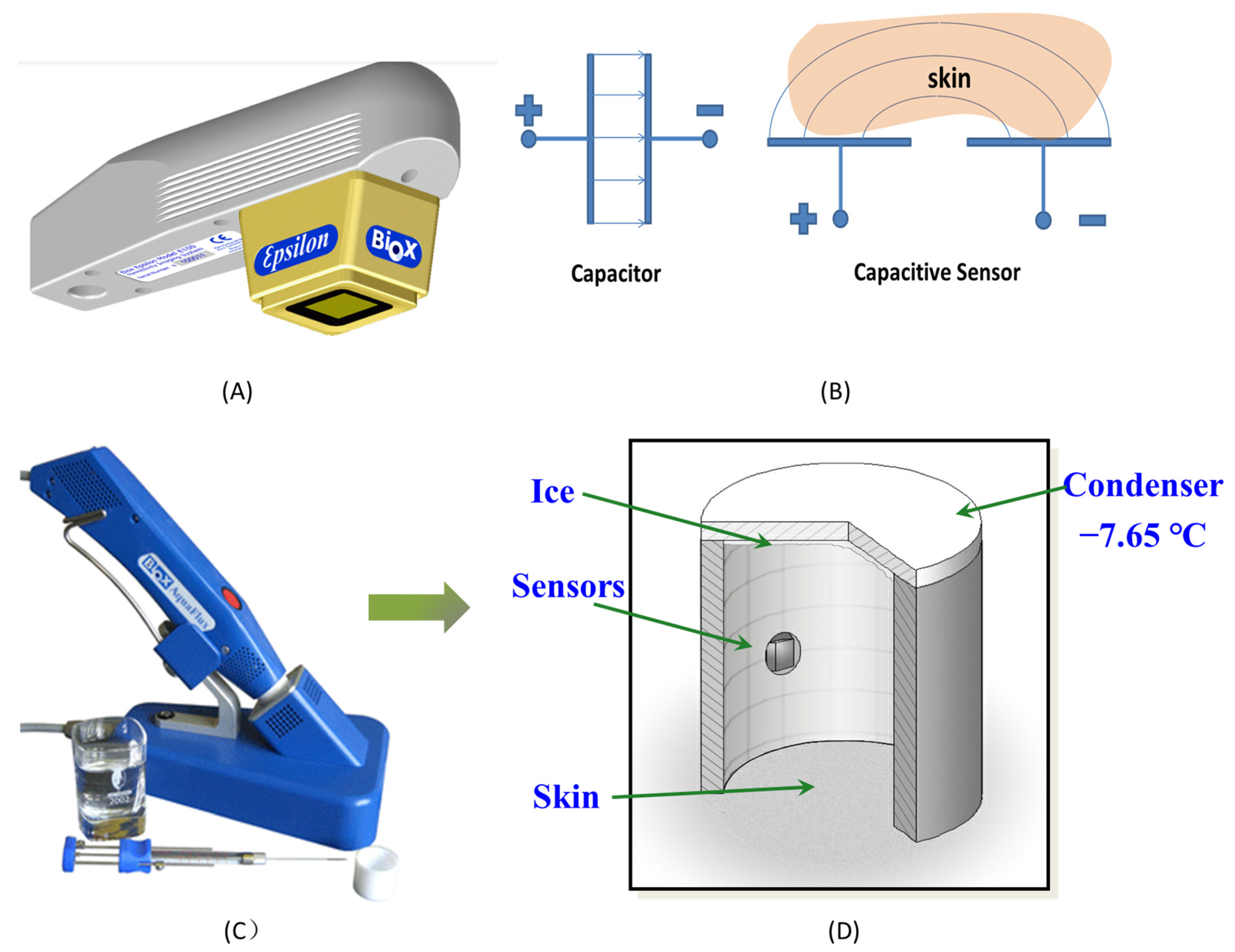
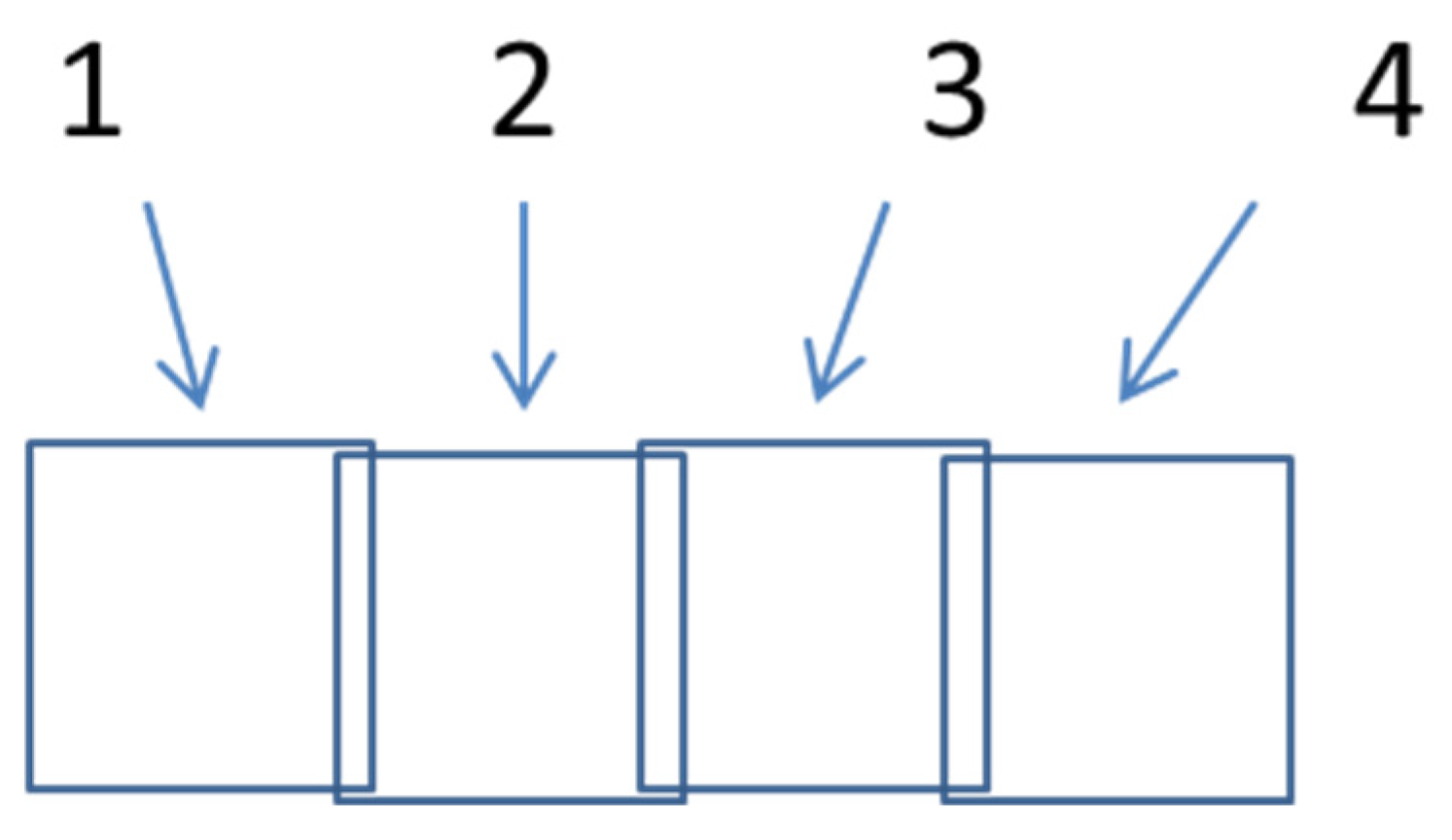

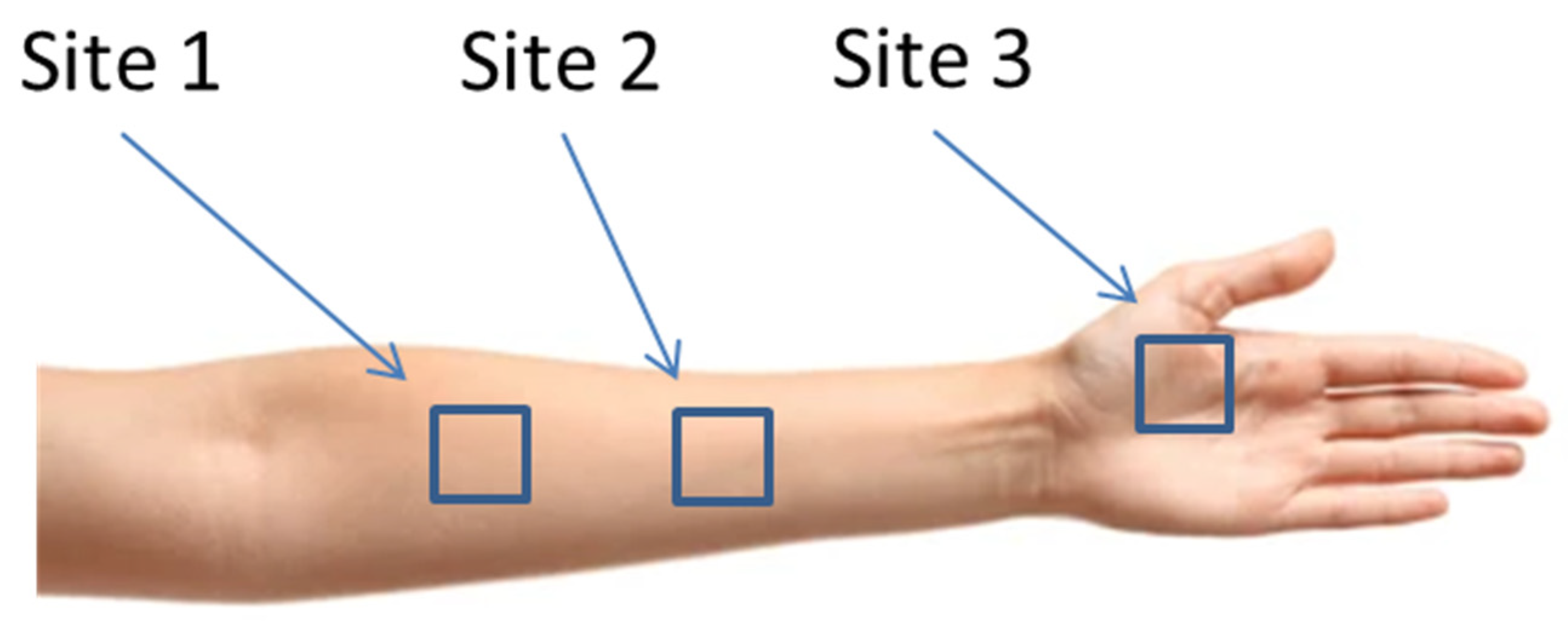
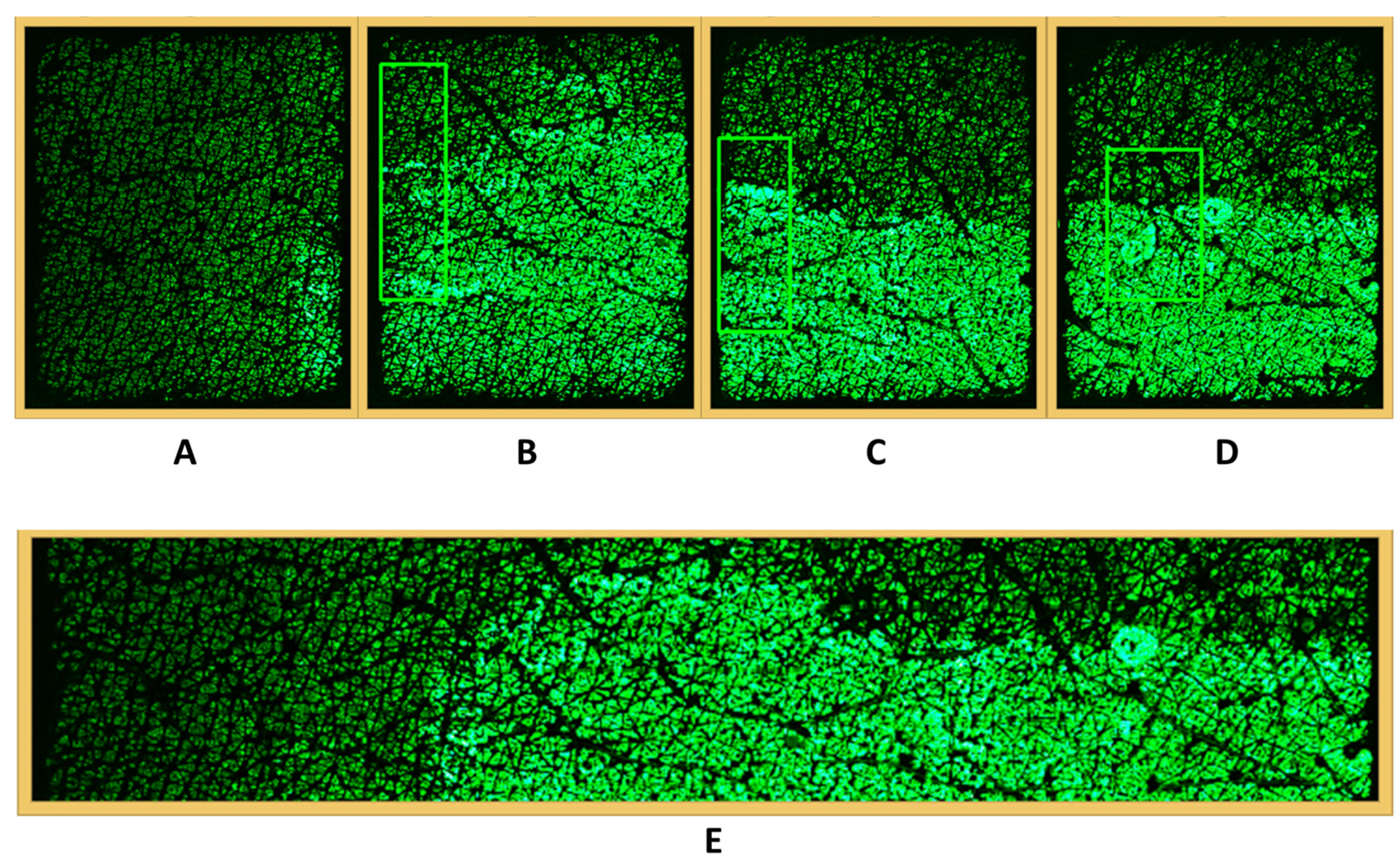
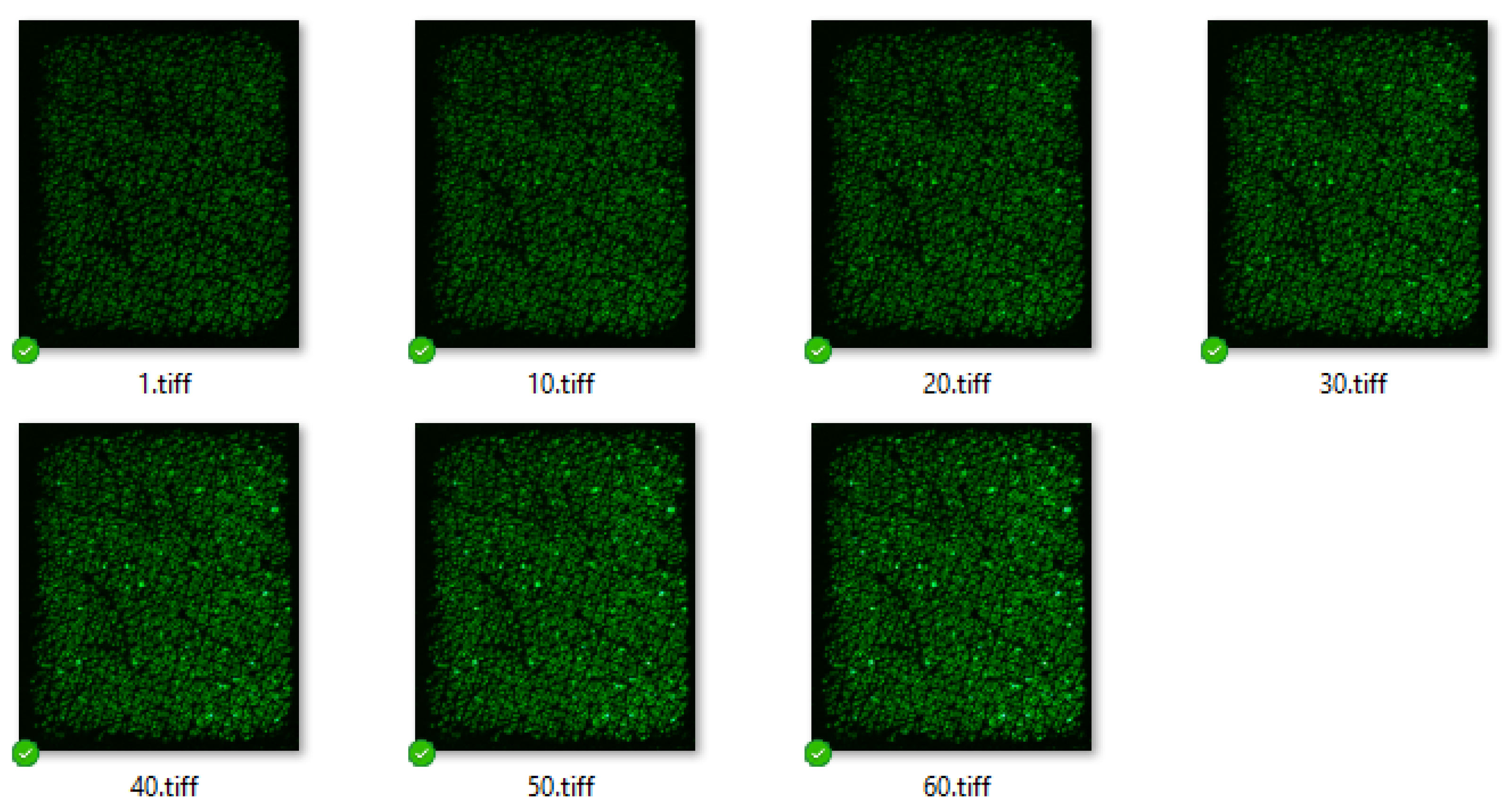
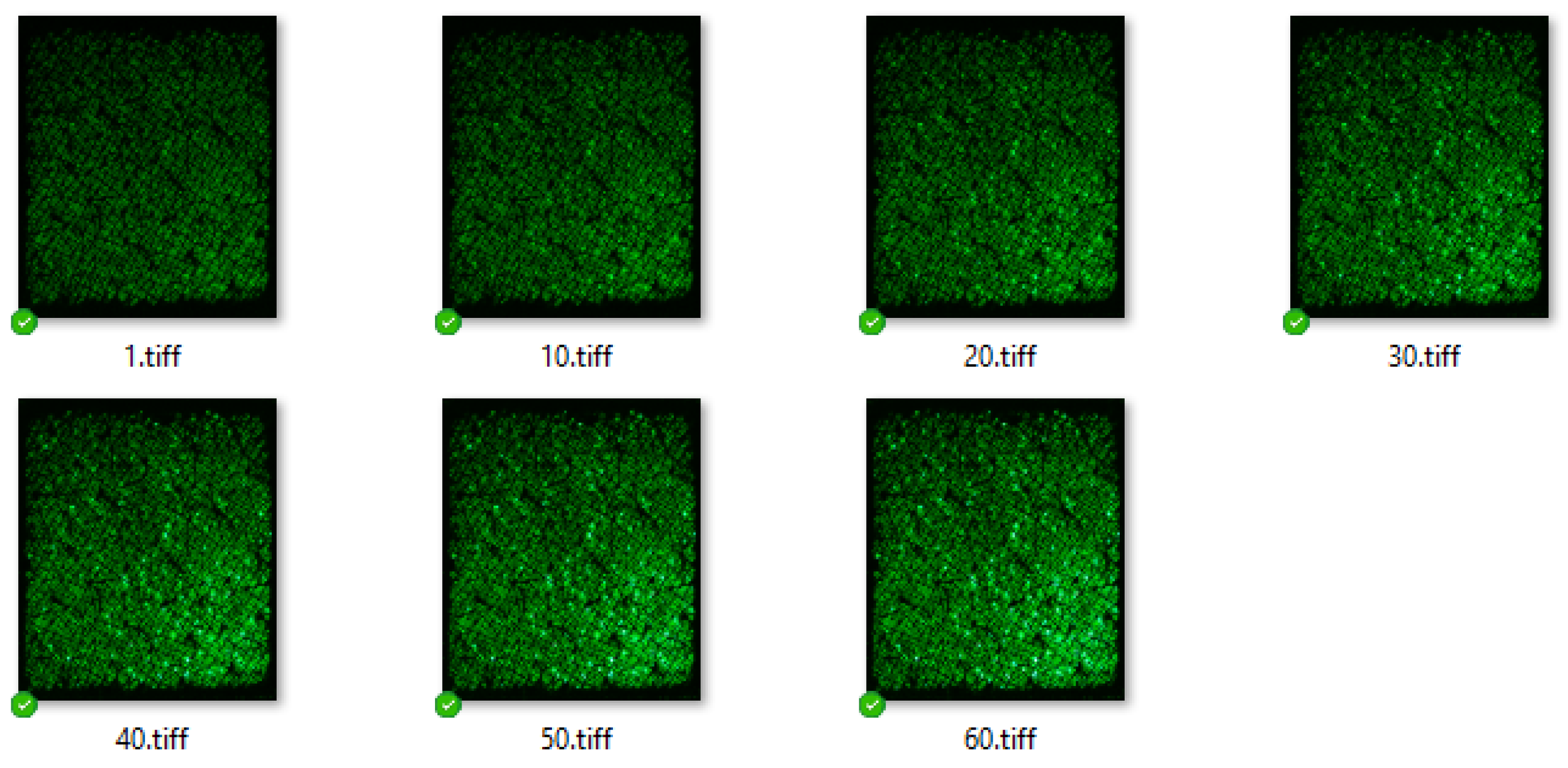
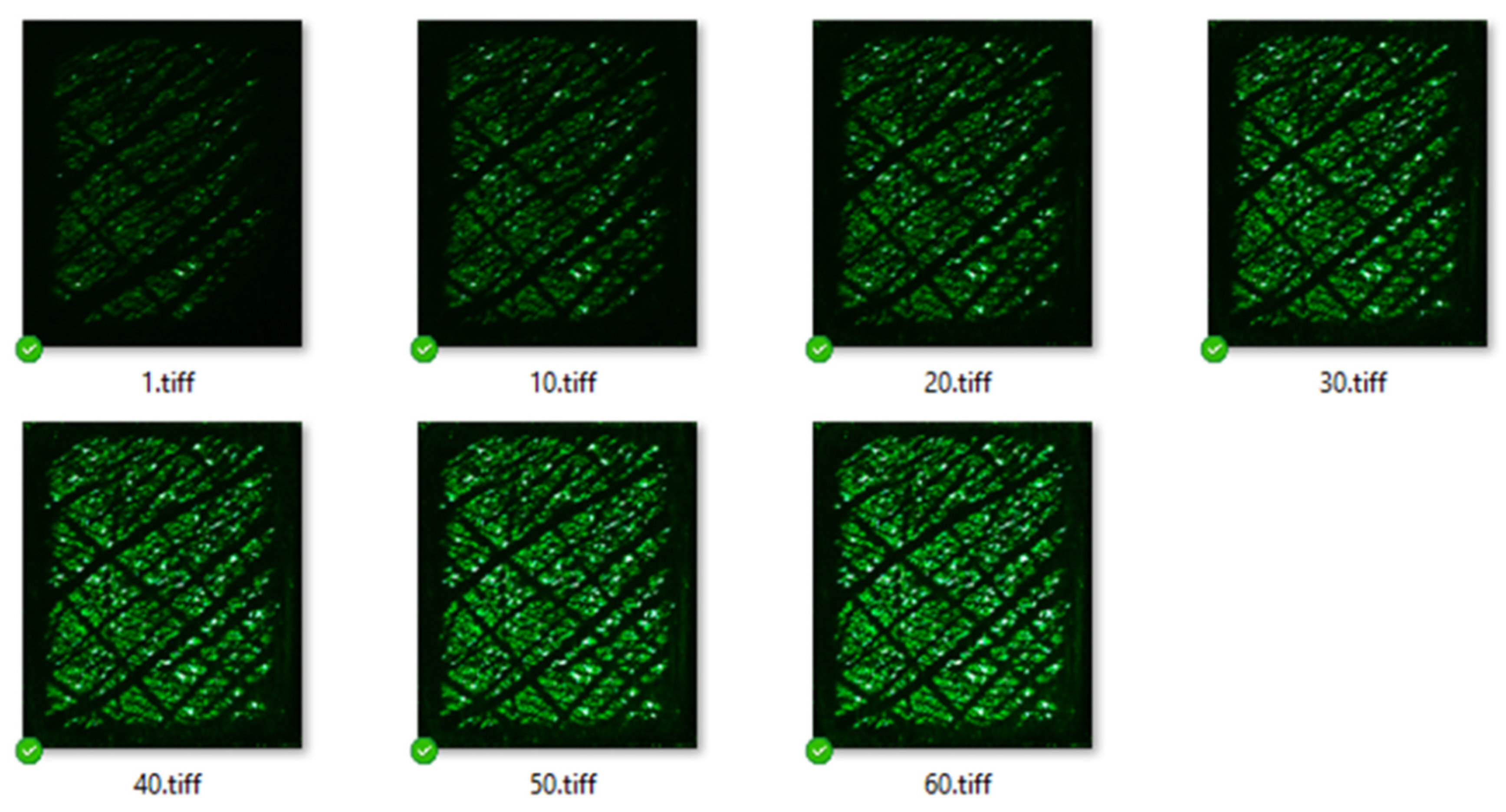
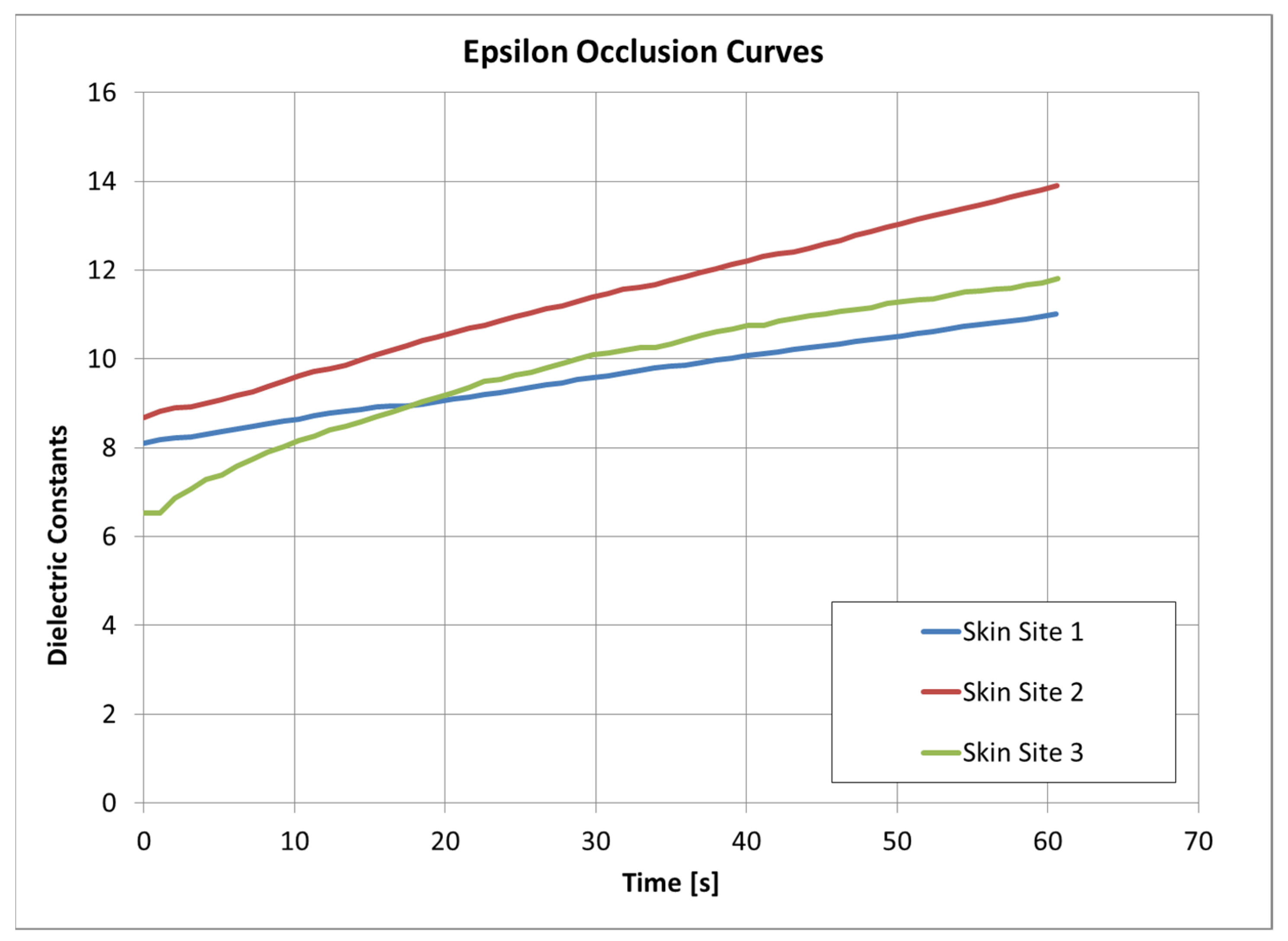

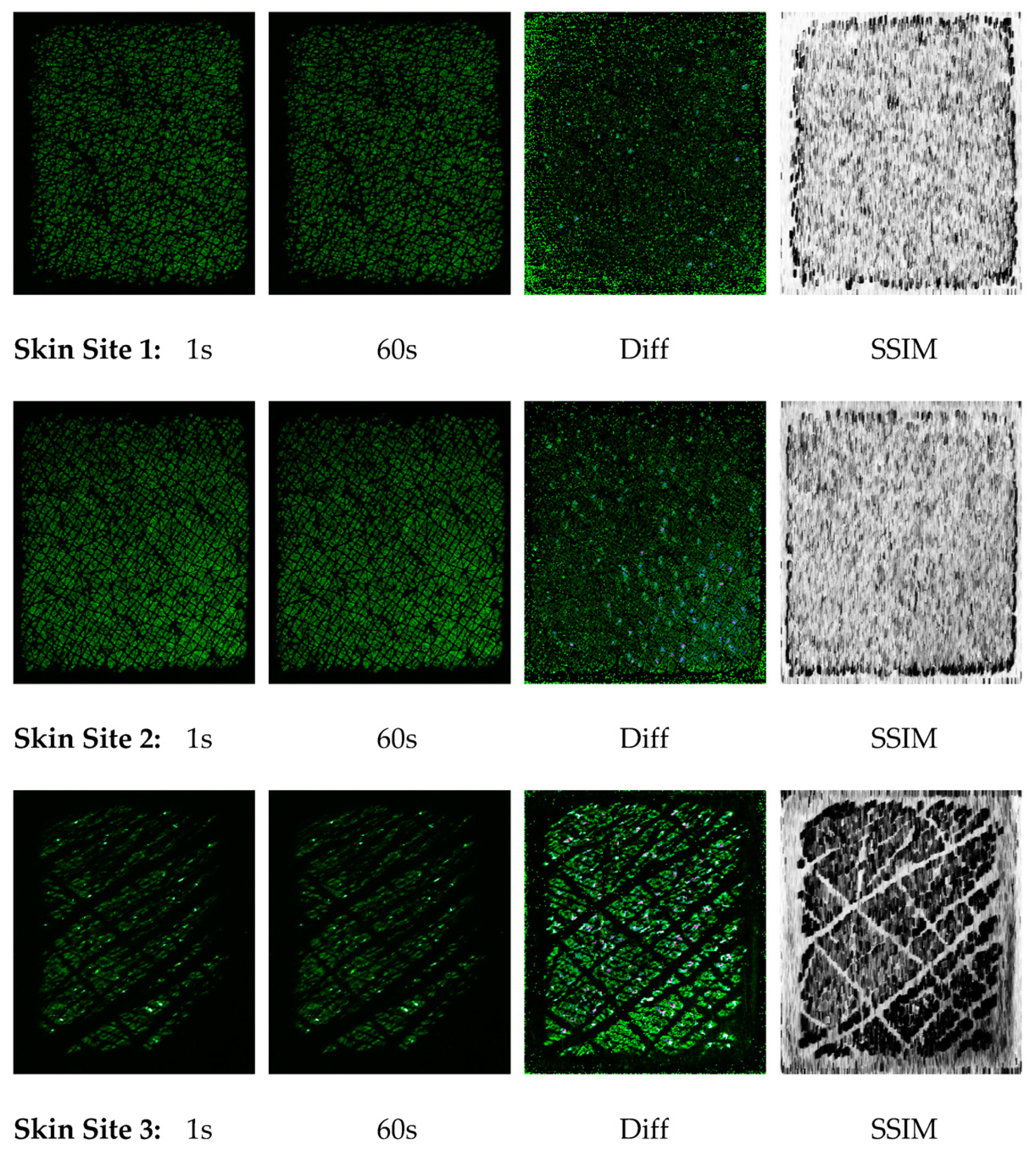
Disclaimer/Publisher’s Note: The statements, opinions and data contained in all publications are solely those of the individual author(s) and contributor(s) and not of MDPI and/or the editor(s). MDPI and/or the editor(s) disclaim responsibility for any injury to people or property resulting from any ideas, methods, instructions or products referred to in the content. |
© 2023 by the authors. Licensee MDPI, Basel, Switzerland. This article is an open access article distributed under the terms and conditions of the Creative Commons Attribution (CC BY) license (https://creativecommons.org/licenses/by/4.0/).
Share and Cite
Ciortea, L.I.; Chen, D.; Xiao, P. Skin Capacitive Image Stitching and Occlusion Measurements. Cosmetics 2023, 10, 32. https://doi.org/10.3390/cosmetics10010032
Ciortea LI, Chen D, Xiao P. Skin Capacitive Image Stitching and Occlusion Measurements. Cosmetics. 2023; 10(1):32. https://doi.org/10.3390/cosmetics10010032
Chicago/Turabian StyleCiortea, Lorelai I., Daqing Chen, and Perry Xiao. 2023. "Skin Capacitive Image Stitching and Occlusion Measurements" Cosmetics 10, no. 1: 32. https://doi.org/10.3390/cosmetics10010032
APA StyleCiortea, L. I., Chen, D., & Xiao, P. (2023). Skin Capacitive Image Stitching and Occlusion Measurements. Cosmetics, 10(1), 32. https://doi.org/10.3390/cosmetics10010032





